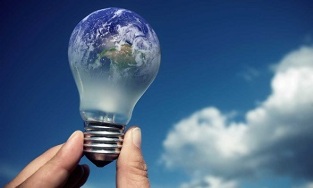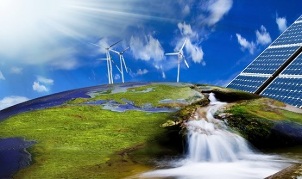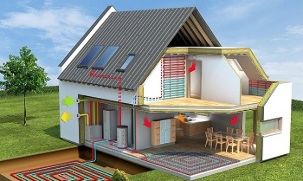
Nowadays, in the modern world, energy saving has become an indispensable part of civilized society. This is health care, money saving and comfortable life.
However, one of the most important (global) features of energy saving is to protect the environment from negative impacts.
Energy saving concept
The concept of "energy saving" has been used for a long time. Today, energy saving has become a conceptual device.
Energy saving is an energy-based energy that can be used in any activity. Energy saving is any activity aimed at reducing the use of energy resources without affecting its main use. Although the definition is extremely accurate, there is often confusion between the concepts of "energy saving" and "energy efficiency". In this regard, the latter definition is given. Energy efficiency is a set of specific characteristics that reflect the ratio of the effect of using energy to the cost of energy itself. Among other things, energy-saving efficiency is characterized by an energy-efficiency grade, which reflects how useful the product is in terms of energy saving. In order to determine energy efficiency, a special energy survey was conducted.
The basic principle of energy saving
Now that the basic concepts in this field have been defined, it is worth reflecting the basic principles of energy saving:

- Use alternative energy sources.
- The use of secondary energy.
- Application of non-energy-intensive technologies and equipment.
- Take measures to make rational use of available energy. Assess the economic feasibility of using any energy-saving technologies and solutions.
This list can be attributed to both the principles of energy conservation regulations and the main methods of insulating private houses. The main thing to remember: energy saving involves not only other ways of obtaining energy, but also activities to save available energy and its rational use.
Alternative Energy
Today, there is a lot of discussion about alternative energy. Usually, we refer to renewable energy. What is constantly being updated on earth? Of course, this is water, sunlight, wind, and crust. Of course, if you study in depth, solar activity will also change over time, and the surface of the earth's crust will become thinner, but all this is done within the universe. We are talking about updating within the framework of our civilization-we believe that in the coming centuries, the sun will not decline and the earth will not fly out of its orbit.
Therefore, the following energy sources are considered as substitutes for oil, natural gas, coal and wood today:
- The energy of the sun.Solar cells and collectors are used to use this energy. The former is a solar cell that directly converts solar energy into electric current. Solar collectors do not convert energy into electricity, but heat the coolant for later use (for example, to heat water in private houses).
- Wind energy.In Europe, windmills use wind to rotate blades to generate electricity. For example, Germany has used this renewable energy source to obtain one-third of its electricity.
- The energy of water.This is not only related to hydroelectric power plants. Nowadays, there are some heat pumps that convert water heat in lakes or swimming pools into stable water to heat houses and provide hot water for them.
- The energy of the earth.The above-mentioned heat pump can also use groundwater or the heat of the earth's crust for public utilities. Such devices are very popular because they do not require a water source or nearby wind: for example, the coolant can be placed in a special pipe under the lawn or in a well in a garden area.
Secondary energy

Energy recovery is one of the basic principles of energy efficiency. Only by recovering the heat of the exhaust gas can the efficiency of the ventilation and air conditioning systems used in buildings be improved. The process of returning part of the heat from the building (air from working equipment and people in the room heating up in the room) is called recovery. In this respect, energy saving is an activity that saves the energy available in the room.
The working principle of the heat exchanger is very simple-through some platinum that conducts heat well, the air sucked in from the room heats the cold air from the street without mixing with it. As a result, instead of ice, hot air of 2-3 degrees enters the house, which helps to make the microclimate in the room more comfortable, and the temperature in the room rises due to the warm flow, which can also save heating. As mentioned above, the heat exchanger is plate type, rotating (with rotating elements inside) and has an intermediate heat carrier. There are many choices for heat exchanger manufacturers, and you can choose equipment for different places and customers.
How to use public energy reasonably?
The rational use of available resources includes not only the installation and operation of energy-saving equipment, but also compliance with specific regulations. The energy saving mode is a way of life in which energy saving is provided at the household level. If you set a goal-saving utility bills, then you must first install equipment that automates energy supply and metering to avoid wasting kilowatts. The selection should be based on the mark confirming that the equipment can save energy. Only the rational use of all equipment can improve the energy optimization of resource utilization. Turning off the lighting in a room where there is no one, paying careful attention to the waste of hot water and the correct setting of automatic metering devices and the consumption of heat and electricity in the house will achieve significant results in saving energy and personal money.
What is a passive house?

Energy efficiency and energy saving are inseparable from the concept of passive house construction. It combines a series of energy-saving measures to ensure low energy consumption. The history of passive house technology began in Darmstadt, where it was first developed by the physicist Feist. The calculation of the energy balance of the house made him think of creating a passive house that does not need to be connected to heating even in winter. In Germany at that time, houses consumed about 200 kWh/m² per year. On the other hand, passive houses only need 10 kWh/m² per year, which can maintain the comfort and even comfort of living throughout the year. The basic criterion for passive houses is to create a closed building envelope that has higher thermal insulation and low thermal conductivity. This is achieved by using energy-saving insulation materials, that is, not using so-called cold bridges (where cold wind enters the building envelope: exterior walls, window frames).
Evaluation of the effect of energy-saving technologies
In order to make the energy consumption level of buildings close to the standards of passive houses, materials with high heat resistance, modern engineering equipment, renewable and secondary energy must be used, in other words, measures must be taken to ensure energy conservation. At the same time, energy efficiency is calculated based on the cost of a particular innovation in the house and the effect that this decision will bring to the homeowner. First, it is necessary to calculate the impact of new technologies on the production and consumption of specific types of resources. In this case, you need to evaluate:
- The degree of resource conservation (the difference between the resources used by energy-saving equipment and traditional equipment during the billing cycle when the same amount of energy is generated).
- The effect of energy production (by comparing the difference or ratio of energy produced by equipment options that use the same amount of resources in a certain period of time).
These indicators will make us realize that we need to continue to calculate economic impact. It is calculated by comparing the cost of buying new (old equipment that may have to be dismantled) and the benefit from energy savings when replacing older equipment in older equipment (within a given time period). This difference will be the effect that the owner will receive within a certain period of time after applying the energy-saving solution. Usually, the installation of heat exchangers or solar panels can pay back the investment within 3-5 years.
In short, it is worth noting that energy saving is not only about saving money. First of all, our children will live tomorrow.
























